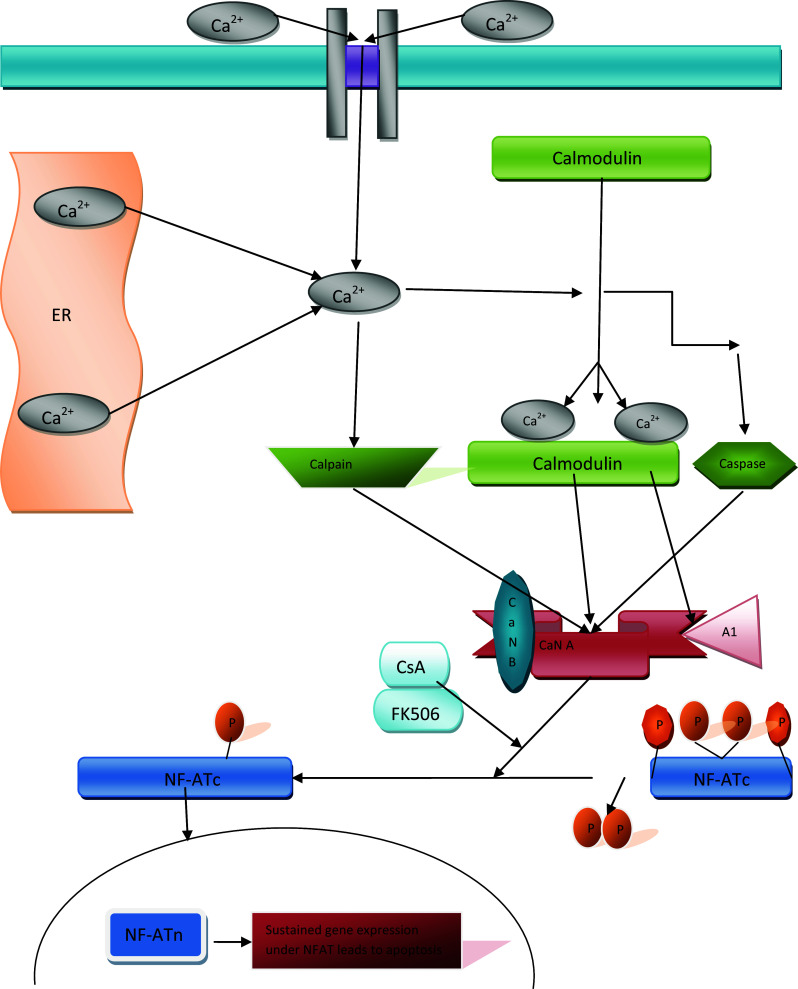Fig. 1.

Schematic presentation of reversible and irreversible activation of calcineurin (CaN). ER stress induced by accumulation of misfolded/unfolded aggregated proteins in the ER leads to Ca2+ release from the ER. Dysregulated Ca2+ homeostasis activates CaN. Reversible CaN hyperactivation may induce a CaN activity level 15-fold higher than that induced by irreversible hyperactivation. Irreversible activation of CaN is observed after proteolytic cleavage of the CaNAI region and calmodulin (CaM) binding domain. The cleaved CaNAI and CaM binding domains are not sensitive to Ca2+/CaM and are thus constantly activated. Hyperactivation of calcineurin results in dephosphorylation and nuclear translocation of cytoplasmic NFAT (NFATc), upon which nuclear NFAT (NFATn) mediates sustained gene expression leading to apoptotic cell death. Immunosuppressant drugs such as tacrolimus (FK506) and cyclosporin A (CsA) inhibit CaN hyperactivation and block NFAT dephosphorylation, reducing apoptosis
